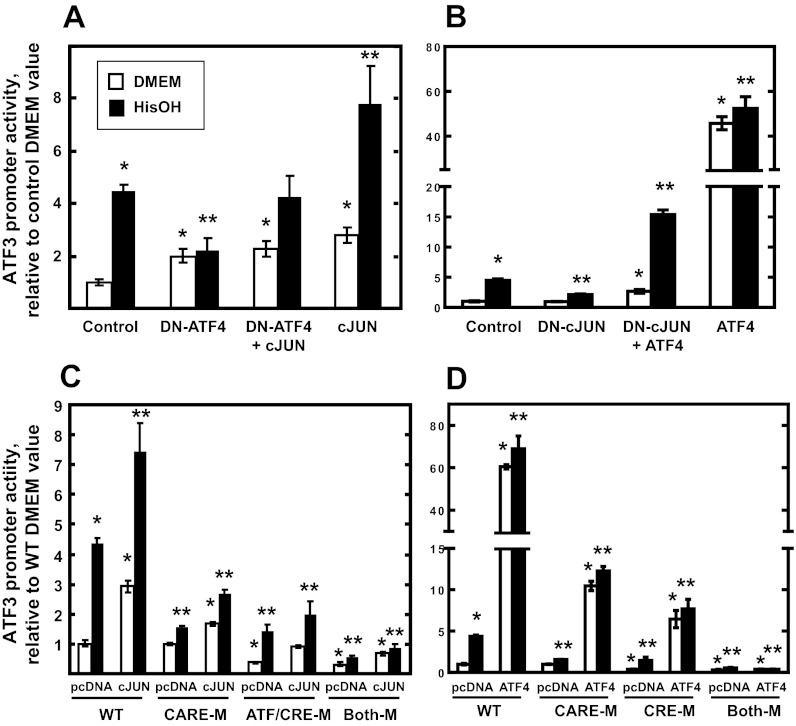Fig. 4.
Both the ATF/CRE site and elevated cJUN protein content contribute to ATF3 promoter activation during the AAR. HepG2 cells were transiently transfected with a Firefly luciferase reporter gene driven by an ATF3 promoter fragment (nt −107/+35). The cells were cotransfected with expression plasmids encoding WT cJUN and dominant negative ATF4 (DN-ATF4) (A) or WT ATF4 and dominant negative cJUN (DN-cJUN) (B). For C and D, HepG2 cells were transiently transfected with a Firefly luciferase reporter gene driven by the ATF3 promoter fragment (nt −107/+35) containing the WT sequence, ATF/CRE site mutated (ATF/CRE-M), CARE site mutated (CARE-M), or both sites mutated (Both-M). The cells were cotransfected with an expression plasmid encoding either cJUN (C) or ATF4 (D). For A–D, at 36 h posttransfection, the cells were incubated in DMEM ± HisOH for 15 h to activate the AAR, and then luciferase activity was analyzed and normalized to protein content. The data are presented as the averages ± SD for a single experiment containing 3–4 replicates per condition, and each experiment was repeated with 2–3 independent batches of cells. *P value of ≤ 0.05 relative to the control (A and B) or WT (C and D) DMEM value, and **P value of ≤ 0.05 relative to the control (A and B) or WT (C and D) HisOH-treated value.

